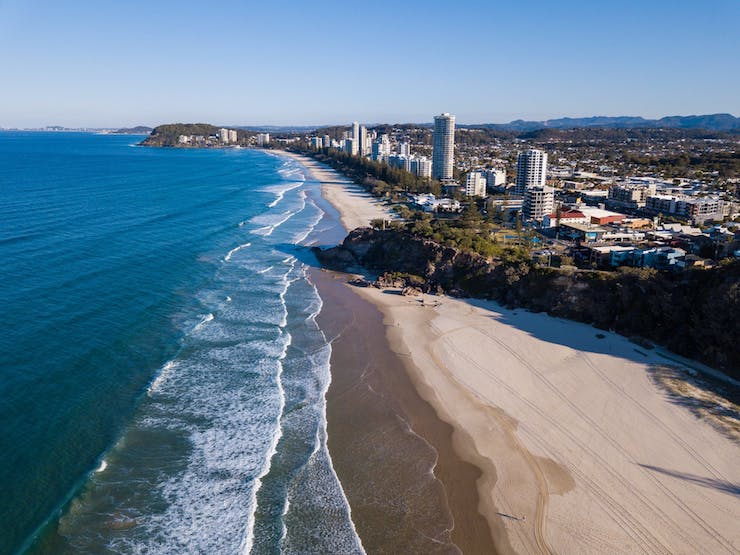Australia Lifeguards Using Drones to Monitor Crowds, Surfers and Beachgoers

Australia is famous for it’s unique animal life and diverse landscape. People come from all over the world to see animals and wonders of nature that can only be found on the continent. But, perhaps what Australia is most famous for is it’s incredible beaches. Australia has more than 10,000 beaches linking it’s 31,000 miles of coastline, more beaches than any other country. It is home to the world’s largest coral reef system, the Great Barrier Reef, and some of the best surfing conditions. Close to 85% of Australia’s population lives within 30 miles of a beach while the country sees more than 1 million tourists flocking to their beaches each year. For a country whose lifestyle heavily reflects ocean activities, maintaining ocean safety is paramount.
The Royal Life Saving Society Australia (RLSSA) and Surf Life Saving Australia (SLSA) are the two main organizations that serve to keep beaches safe. RLSSA provides the education needed for swimming and water safety while the SLSA runs the country’s largest lifeguard program. In 1973 SLSA introduced the Westpac Lifesaver Rescue Helicopter Service that has preformed thousands of rescue missions. Even though RLSSA and SLSA have some of the highest trained lifeguards in the world, tragedies still happen. Each year far too many people are lost to accidents on Australia’s beaches. To help lessen these numbers SLSA has added new technology to their rescue operations with the Westpac Life Saver Rescue Drone program.
For several years now, SLSA and Westpac have been operating drones. These drones are used for a wide range of scenarios. Small drones are used to patrol the often crowded beaches to ensure people are behaving appropriately. For a life guard watching the water, it can be very hard to monitor all the people on the beach as well. Using a drone allows the beach patrol to have an extra set of eyes. The drones are also used to check the shoreline for dangers. Crocodiles, sharks, and other marine creatures like to frequent shoreline shallows. Being able to manually patrol for these dangers is often impossible due to lack of people able to carry out a daily search. Instead SLSA positions drones along the shoreline allowing them to regularly check if beaches need to be closed to the public.
Using drones to monitor the beaches and shallows is far from the only ways SLSA and Westpac use drones. The primary way to keep people safe in the water is with vigilant lifeguards watching from their towers. But as surfers venture further out from shore, keeping a safe eye on them can be a challenge. This is one of the primary reasons Westpac was formed, to provide lifeguards with an even further range of coverage. As many rescue groups are well aware of, running a helicopter can be a very labor intensive and costly procedure. This is why Westpac has begun to rely on drones to scout the waters further out from shore for surfers and swimmers that could be in danger.
If a drone spots a victim out in the water, the drone can be used as a safety device until rescuers can get to the scene. The drone can supply flotation devices, or become an actual flotation device. The drone can lower a tether to a victim to either help them stay afloat or be used as a towline. The drone they use, developed by The Ripper Group, is called the Little Ripper and it has proven to be a valuable life saving tool in Australia. Now Westpac is adding a new feature to the Little Ripper to help track victims in the water. CEO of the Ripper Group, Ben Trollope, said that they have made modifications on the drones to allow them to deploy dye in the water to mark where a victim is, a process the company was already familiar with. “Sea marker dye has been used for many years in marine search and rescue operations to see the direction of water currents,” Trollope explained. “We’ve taken the concept of what we use on much larger drones and custom-built a new system to go onto the smaller drones, so it’s accessible to organizations like Surf Lifesaving.”
Now when a Little Ripper drone spots a victim in the water it can drop the dye to make sure the victim is visible to rescuers in a helicopter. As the victim drifts with the water current, the dye will as well. The victim’s precise location is never lost, increasing the odds of rescue. SLSA already has about 50 small drones at their disposal. These new drones with the dye will be entered into a trial period for several months before data shows just how much of an asset they will be. If the data shows that the dye marker drones have greatly increased SLSA and Westpac efforts, steps will be taken to procure a new fleet of drones. As Trollope said, “Our trial period will go through until around the middle of the year and then we’ll review the results. Having that bird’s-eye perspective gives us the ability to spot hazards and identify potential risks, it just opens up another world to us.”
|